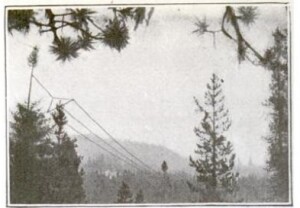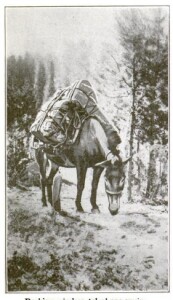
 A hundred years ago this month, the July 1920 issue of Popular Science reported that the United States Forest Service had found a valuable ally in the radiotelephone. 42 sets like the one shown above were in operation at remote points in Wyoming, Montana, and Oregon. Range varied from 10 to 300 miles, with about 50 miles being typical.
A hundred years ago this month, the July 1920 issue of Popular Science reported that the United States Forest Service had found a valuable ally in the radiotelephone. 42 sets like the one shown above were in operation at remote points in Wyoming, Montana, and Oregon. Range varied from 10 to 300 miles, with about 50 miles being typical.
The article noted that two such stations bore a cost of about $3000. However, that particular circuit covered 60 miles, and a comparable telephone system would have cost over $5000. Even though rangers started with no radio experience, the Service reported that after a few months, they were able to expertly take and send messages.
The trees themselves were pressed into service as antenna supports. At each site, two suitable trees would be stripped of branches and the wires stretched between them. Initially, storage batteries were packed back to the closest town for charging, but gasoline generators had just been installed to save that labor.
Mules, such as the ones shown at right, transported the equipment to its station. But when the trails got too steep for the mules, the rangers themselves carried the equipment.
